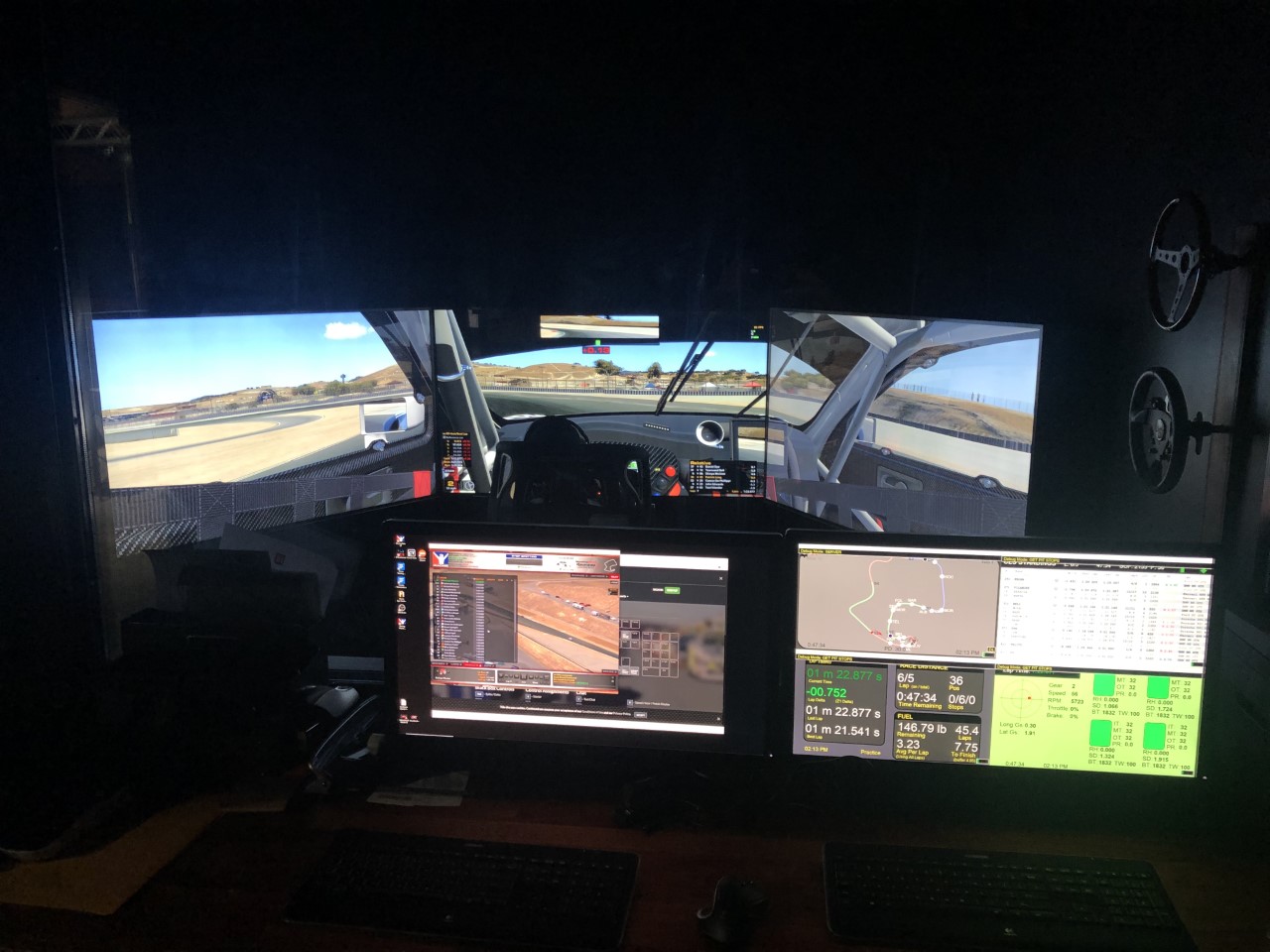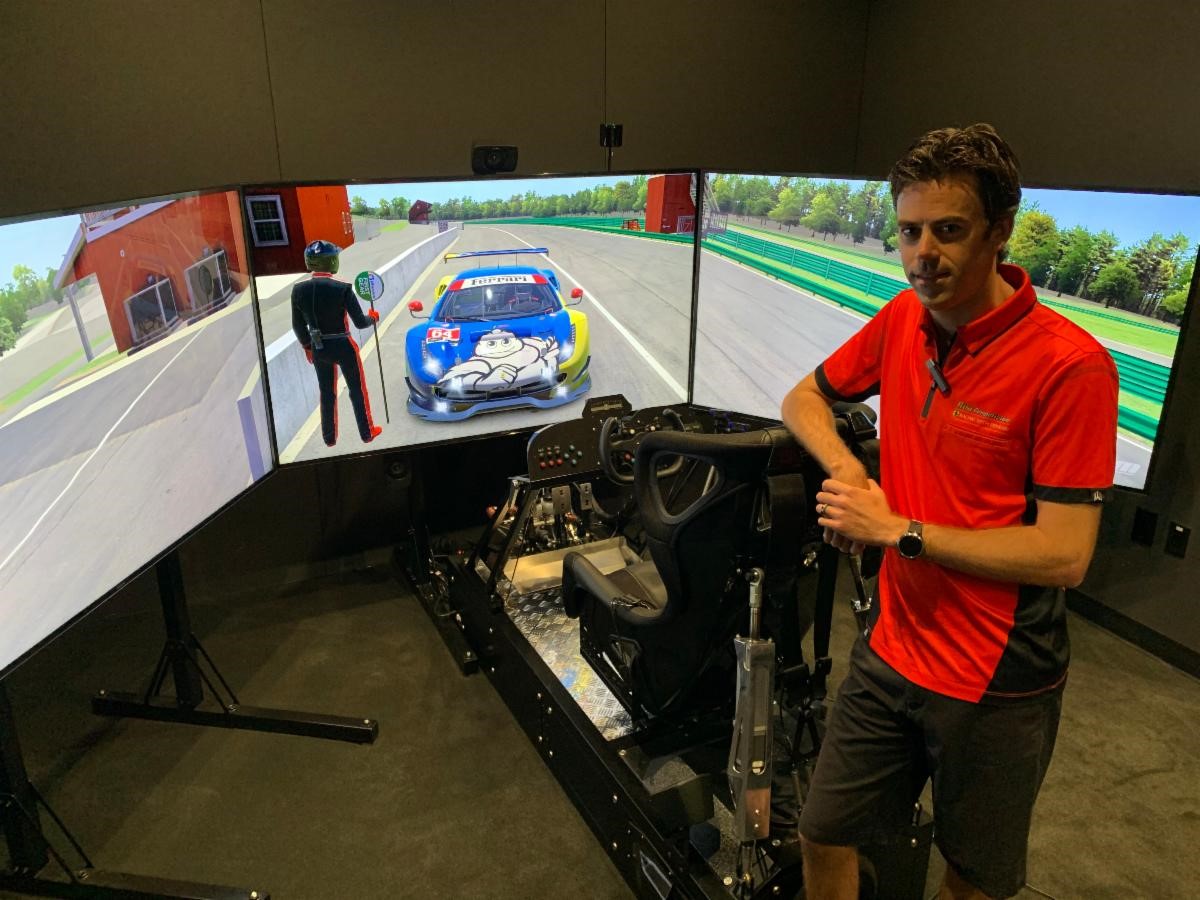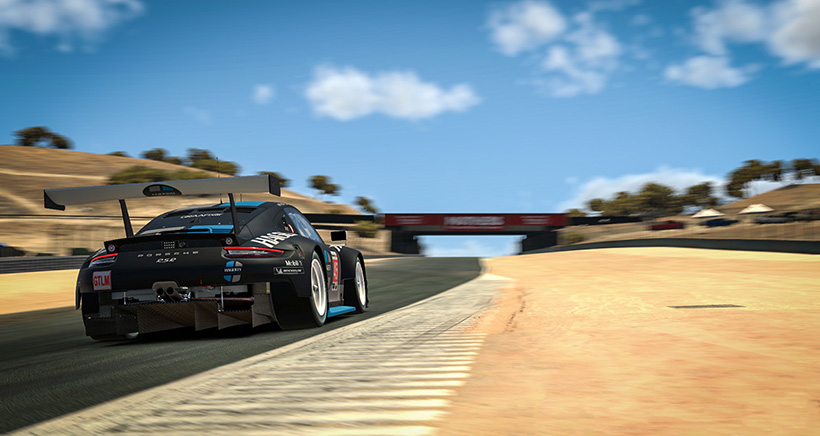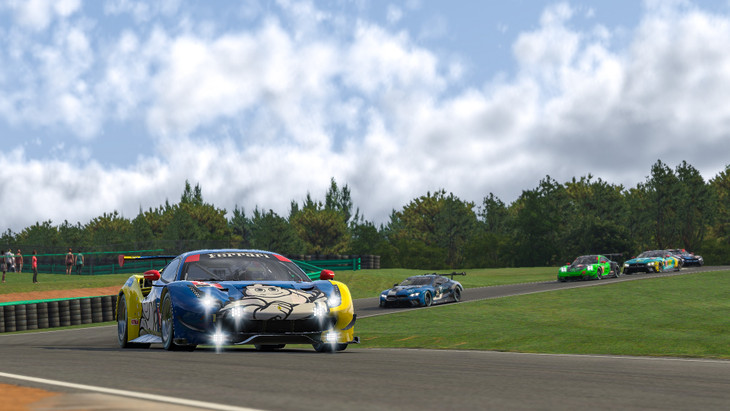When the racing community found itself with no racing as a result of the Covid-19 pandemic, numerous series jumped into the sim racing world. CXC Simulations took part in two different series, the IMSA iRacing Challenge and Fox Sports1’s Wednesday Night iRacing.
As the racing world quickly worked to transition to a new digital environment, CXC Simulations create an environment that would provide a driver the tools traditionally available to them while in a socially distanced setting. With a driver utilizing a Motion Pro II simulator at CXC Simulations’ Los Angeles facility, we then utilized a CXC Coaching Station that displays all of the car’s telemetry in real time that was operated by CXC Simulations owner, Chris Considine. Utilizing internet-based collaboration hubs and radio systems, CXC was linked to engineers and strategists who were based remotely. The drivers, engineers and strategists were able to work with exactly the same data that they utilize in real life.
CXC Simulations also took the opportunity to give the audience a chance to see and hear the drivers in action with a live video and audio stream. Live timing and scoring, telemetry, and radio transmissions with the engineers and strategists allowed the audience to be completely immersed in the races.
“Our goal at CXC Simulations is always to provide the most realistic driving experience possible,” said Chris Considine, CEO of CXC Simulations. “In this instance, our simulator and equipment became an integral part of creating a virtual race weekend for the drivers and their teams.”
Porsche’s American factory driver, Patrick Long, used CXC Simulations to take part in FOX Sports 1’s Wednesday Night iRacing as well as the IMSA iRacing Challenge. Wednesday Night iRacing gave racers from vastly different background the challenge of racing in vastly different disciplines – off-road trucks, stock cars, Modified and road racing all featured in Wednesday Night iRacing.
Patrick and his Wright Motorsports team also took part in the IMSA iRacing Challenge, utilizing the Porsche 911 GT3 R. The 90-minute races featured large fields of both professional racers and numerous drivers who were eSports specialists, with fuel strategy, tire degradation and caution periods all factoring into the outcome of the race.

“My engineer, Bob Viglione, helped me with setup, testing and in-race strategy and spotting,” said Long. “He was remotely connected to the CXC team who was on-site, but socially distanced and in another room running the simulator’s data computer but also working with the various production teams on the live footage we were streaming.
“I definitely don’t consider myself to be a serious sim racer. But the similarities between these races and a real race were clear – you must have the same mental focus and sustained concentration. All the preparation leading up to a race is very similar. You come away with that same post-race high. The race execution, such as strategy and team communications, navigating race control and operation protocols, are very much the same.
“The fundamentals of competition and the requirements of being razor-sharp in how you extract and replicate place lap after lap is even more challenging for me in the simulator than in the real thing. It meant that when I stepped back in the race car after 90 days away that not only was I ready, but I felt my visual work and mental endurance had improved. I think some key drivers use simulators for personal development more than they discuss publicly.”
Joel Miller also took part in the IMSA iRacing Challenge as part of the legendary Risi Competizione team, which meant he utilized the Ferrari 488 GT3. Miller serves as the head driver coach for Risi Competizione’s Ferrari Challenge program and has extensive open-wheel and sports car experience.

“I was at CXC Simulations in Los Angeles, working with the team’s engineer in Florida as well as strategists in Houston. My spotter was in San Diego. Everyone was able to plug in for testing and the race. The remote guys were able to watch the car on track and we were able to communicate via TeamSpeak just like at the track. My radio button allowed me to speak with the crew as it would in real life. We also had live telemetry. In the case of iRacing, this helped with fuel numbers and gave us more information to work with in terms of timing our pit stops to come out in clean air.
“The CXC Simulations Motion Pro II was very realistic, especially with the brake feel. After two hour and 40 minutes I was sweating! The steering feel is very heavy which provides feedback so you can really feel the car. When we made chassis adjustments, you had a good basis from the simulator to know if the change was good or bad.
“The real-time nature of how everyone linked up simulated a real test or race. We were all on the same channel so we could all hear and communicate the changes done during testing. I would try setup A and my teammate would try setup B and afterwards we would come up with a hybrid setup C in which we both would give feedback. This is exactly what happens in real-life test days. It was very cool to be a part of and see it happen virtually as well. With the telemetry we were able to see the tire temps and spreads which is something they use to help maximize the tire – the trends were found and we could help make the car go faster.”

(MEDIA: EDITORIAL USE ONLY) (This image is from the iRacing computer game)

